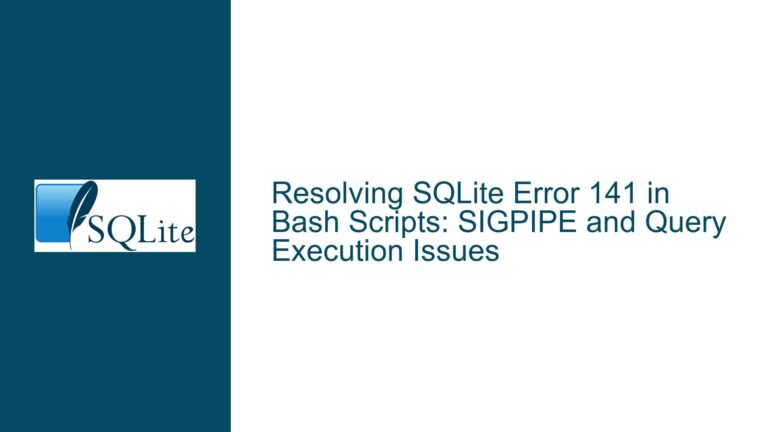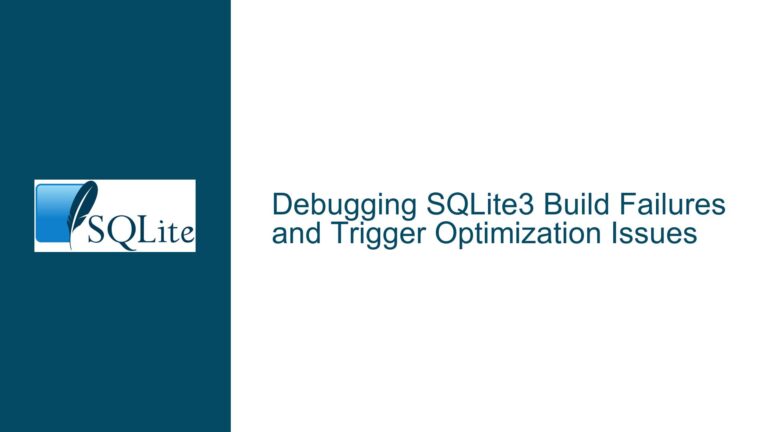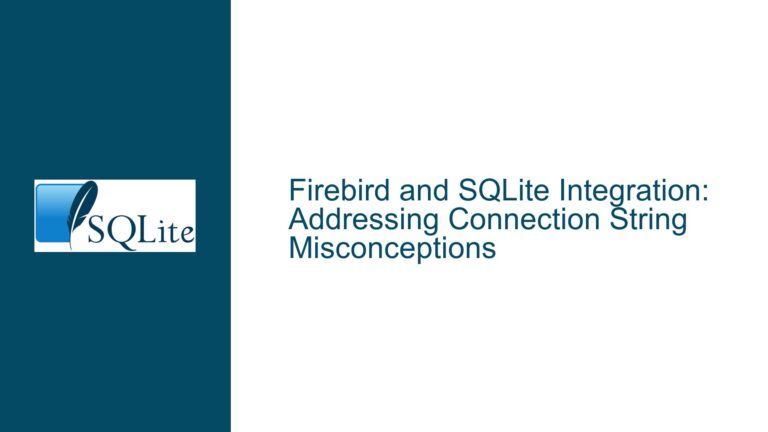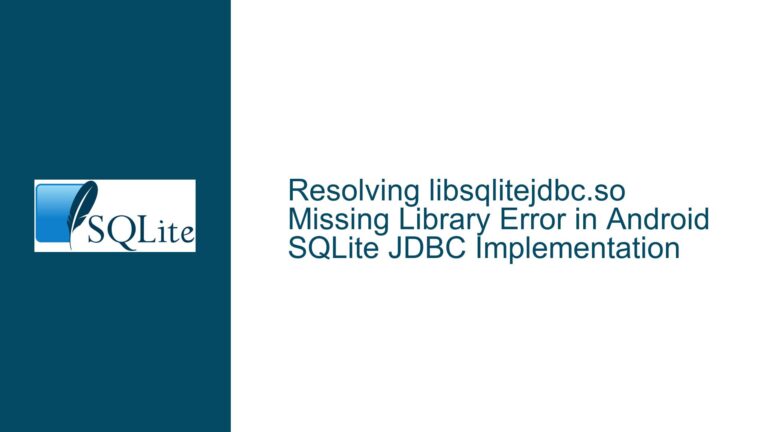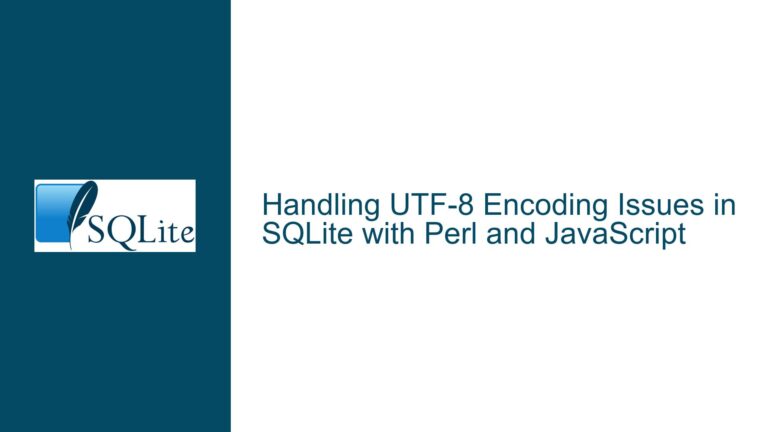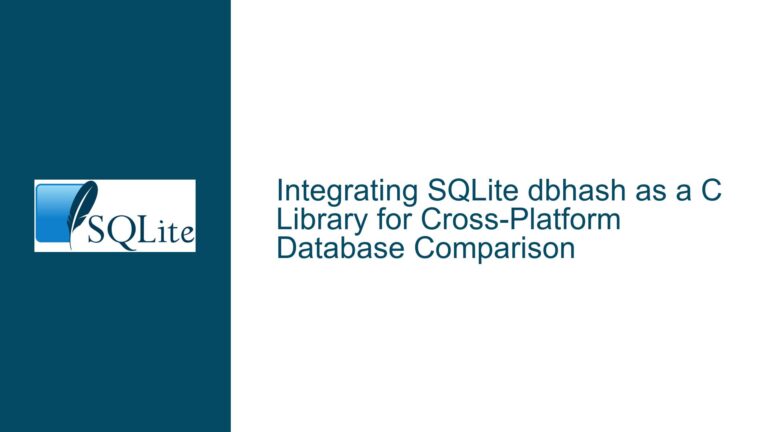Updating Python SQLite3 Library in Cygwin Environment
Understanding the Python SQLite3 Library and Cygwin Integration
The Python SQLite3 library is a built-in module that provides a lightweight, disk-based database interface for Python applications. It leverages the SQLite C library under the hood, which is dynamically linked at runtime. In a Cygwin environment, which emulates a Unix-like environment on Windows, the integration between Python and SQLite3 can become complex due to the way shared libraries (DLLs) are managed. The core issue revolves around updating the SQLite3 library used by Python in Cygwin, particularly when the traditional method of compiling and installing SQLite from source no longer works as expected.
When Python is installed in Cygwin, it typically uses a precompiled SQLite3 shared library (e.g., cygsqlite3-0.dll). This library is dynamically linked to the Python _sqlite3 module, which is part of the Python standard library. The version of SQLite3 available to Python is determined by the version of this shared library. If the shared library is outdated or incompatible, it can lead to issues such as missing features, performance bottlenecks, or even runtime errors.
The challenge arises when attempting to update the SQLite3 library in Cygwin. Unlike a typical Unix environment, where compiling and installing a new version of SQLite3 would automatically update the shared library used by Python, Cygwin requires manual intervention to ensure the correct version of the shared library is linked. This involves identifying the location of the shared library, replacing it with a newer version, and verifying that Python correctly recognizes the updated library.
Why Manual Replacement of the SQLite3 DLL is Necessary
In a standard Unix-like environment, updating the SQLite3 library is relatively straightforward. Compiling and installing SQLite3 from source typically updates the shared library in the system’s library path, and Python automatically picks up the new version. However, in Cygwin, the process is more nuanced due to the way shared libraries are managed and linked.
Cygwin uses a unique approach to handle shared libraries, which involves wrapping Windows DLLs in a Unix-like interface. This means that the SQLite3 shared library used by Python is not a standard Unix shared object (.so) but rather a Cygwin-specific DLL (e.g., cygsqlite3-0.dll). When you compile SQLite3 from source in Cygwin, the resulting library (libsqlite3.dll) is not automatically placed in the correct directory or linked to Python. Instead, you must manually replace the existing cygsqlite3-0.dll with the newly compiled libsqlite3.dll.
The need for manual replacement stems from the fact that Cygwin’s package manager does not always provide the latest version of SQLite3. Additionally, the Python installation in Cygwin may be configured to use a specific version of the SQLite3 shared library, which may not be updated even if a newer version is available in the system’s library path. By manually replacing the DLL, you ensure that Python uses the exact version of SQLite3 you intend, bypassing any potential conflicts or mismatches.
Step-by-Step Guide to Updating the SQLite3 Library in Cygwin
To update the SQLite3 library used by Python in Cygwin, follow these detailed steps:
Step 1: Identify the Current SQLite3 Library Used by Python
Before making any changes, it is essential to determine the current version of the SQLite3 library being used by Python. This can be done using a Python script that prints the SQLite3 version and source ID. The script provided in the discussion is an excellent starting point:
#!/usr/bin/python3
import sqlite3
import sys
def ConnectToDB(sdb):
return sqlite3.connect(sdb)
print(sys.version_info)
print(sys.platform)
print(sqlite3.sqlite_version)
print(sqlite3.__path__)
DB = ":memory:"
con = ConnectToDB(DB)
cur = con.cursor()
cur.execute("SELECT sqlite_version(), sqlite_source_id();")
for row in cur:
print(row[0] + '\r\n' + row[1])
con.close()
Running this script will output the Python version, platform, SQLite3 version, and the path to the SQLite3 module. Pay close attention to the SQLite3 version and the module path, as these will be crucial for the next steps.
Step 2: Locate the SQLite3 Shared Library in Cygwin
Once you have identified the SQLite3 version used by Python, the next step is to locate the shared library file. In Cygwin, this is typically a DLL file named cygsqlite3-0.dll. You can use the ldd command to find the exact location of this file:
$ ldd `find /usr/lib/python3.9/ -name '_sqlite3*'` | grep sqlite
This command searches for the _sqlite3 module in the Python library directory and lists the shared libraries it depends on. The output will include the path to cygsqlite3-0.dll, which is the file you need to replace.
Step 3: Backup the Existing SQLite3 DLL
Before making any changes, it is crucial to create a backup of the existing cygsqlite3-0.dll file. This ensures that you can revert to the original version if something goes wrong. Use the following command to create a backup:
$ cp /usr/bin/cygsqlite3-0.dll /usr/bin/cygsqlite3-0.dll_save
This command copies the existing DLL to a new file with the _save suffix, preserving the original file for future use.
Step 4: Compile the Latest Version of SQLite3 from Source
To update the SQLite3 library, you need to compile the latest version from source. Download the SQLite source code from the official website or the trunk repository. Extract the source code and navigate to the directory:
$ cd /path/to/sqlite-trunk
Next, configure and compile the source code using the following commands:
$ ./configure --prefix=/usr
$ make
This will generate a new libsqlite3.dll file in the source directory. This file is the updated SQLite3 shared library that you will use to replace the existing cygsqlite3-0.dll.
Step 5: Replace the Existing SQLite3 DLL with the New Version
Once you have compiled the new SQLite3 shared library, copy it to the location of the existing cygsqlite3-0.dll file. Use the following command:
$ cp /path/to/sqlite-trunk/libsqlite3.dll /usr/bin/cygsqlite3-0.dll
This command replaces the existing DLL with the newly compiled version. Ensure that the file permissions are preserved during the copy operation.
Step 6: Verify the Updated SQLite3 Library in Python
After replacing the DLL, it is essential to verify that Python recognizes the updated SQLite3 library. Run the Python script from Step 1 again to check the SQLite3 version and source ID:
$ ./SQLiteVersion.py
The output should now reflect the updated SQLite3 version and source ID. If the version matches the one you compiled, the update was successful. If not, double-check the file paths and ensure that the correct DLL was replaced.
Step 7: Troubleshooting Common Issues
If the updated SQLite3 library is not recognized by Python, there are a few common issues to check:
File Permissions: Ensure that the new DLL has the correct file permissions and is accessible by the Python process. Use the
ls -lcommand to verify the permissions.Library Path: Verify that the Python process is using the correct library path. You can use the
lddcommand again to ensure that the updated DLL is being linked.Python Cache: Python may cache the SQLite3 module, preventing it from recognizing the updated library. Try restarting the Python interpreter or clearing the module cache.
Compatibility Issues: Ensure that the new SQLite3 library is compatible with the Python version you are using. Incompatible versions can lead to runtime errors or unexpected behavior.
By following these steps, you can successfully update the SQLite3 library used by Python in a Cygwin environment. This process ensures that you have access to the latest features and improvements in SQLite3, while also maintaining compatibility with your Python applications.

